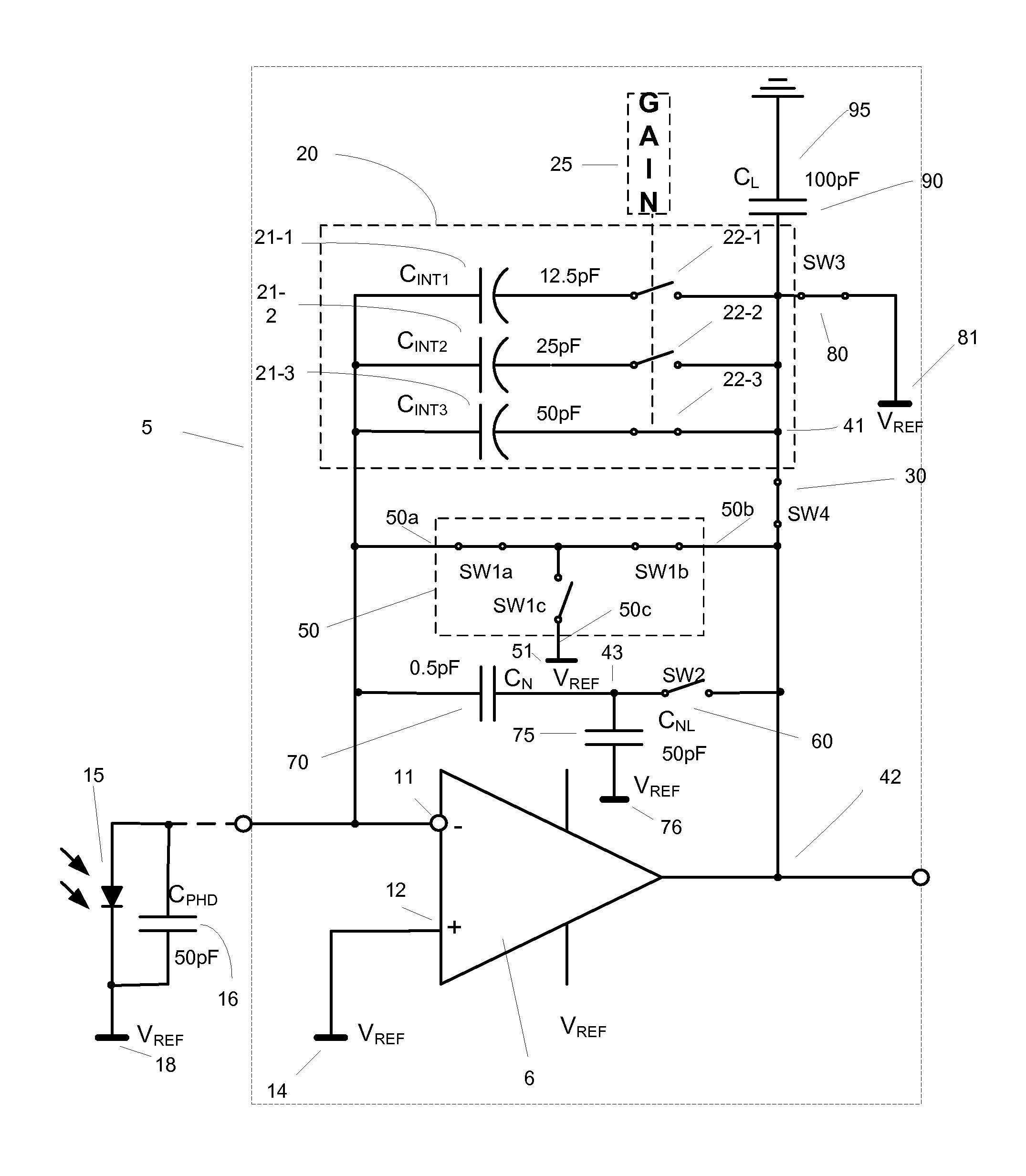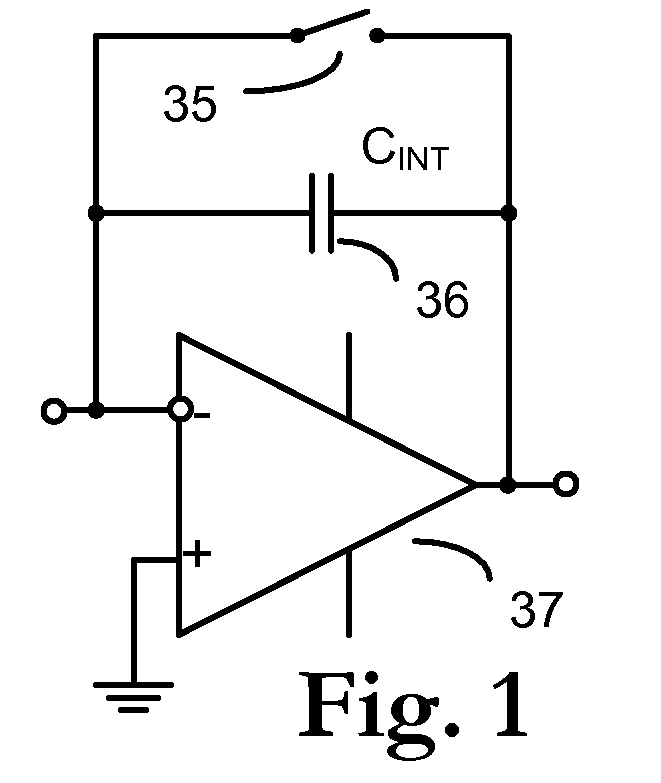Apparatus for current-to-voltage integration for current-to-digital converter
a current-to-digital converter and current-to-voltage technology, applied in the field of current-to-voltage integrators, can solve the problems of thermal noise, unfavorable sample reset voltage, and thermal noise present in the switch used for sampling operation or amplifier, so as to reduce the demands on the reference voltage source, the effect of reducing charge injection and kt/c errors
- Summary
- Abstract
- Description
- Claims
- Application Information
AI Technical Summary
Benefits of technology
Problems solved by technology
Method used
Image
Examples
Embodiment Construction
[0038]FIG. 2 depicts one embodiment of a current-to-voltage integrator 5 in accord with the present invention. FIG. 2 also shows the connection of an ideal photodiode 15 as it is supposed to be connected to the integrator 5, together with the parasitic capacitance 16 associated with this connection. The connection of an actual photodiode 15′ may differ significantly from the connection of the ideal photodiode 15 and may include additional switches, etc.
[0039]Still referring to FIG. 2, current-to-voltage integrator 5 includes an operational amplifier 6 having an inverting (−) input connected to node 11, and a non-inverting (+) input connected by node 12 to reference voltage VREF at node 14 that replaces the “virtual ground” normally used in such integrator circuits. Other embodiments may utilize another suitable bias voltage node 14′, in which case the “virtual reference voltage” referred to hereinafter would be equal to that bias voltage.
[0040]Inverting input node 11 is indirectly c...
PUM
 Login to View More
Login to View More Abstract
Description
Claims
Application Information
 Login to View More
Login to View More - R&D
- Intellectual Property
- Life Sciences
- Materials
- Tech Scout
- Unparalleled Data Quality
- Higher Quality Content
- 60% Fewer Hallucinations
Browse by: Latest US Patents, China's latest patents, Technical Efficacy Thesaurus, Application Domain, Technology Topic, Popular Technical Reports.
© 2025 PatSnap. All rights reserved.Legal|Privacy policy|Modern Slavery Act Transparency Statement|Sitemap|About US| Contact US: help@patsnap.com



